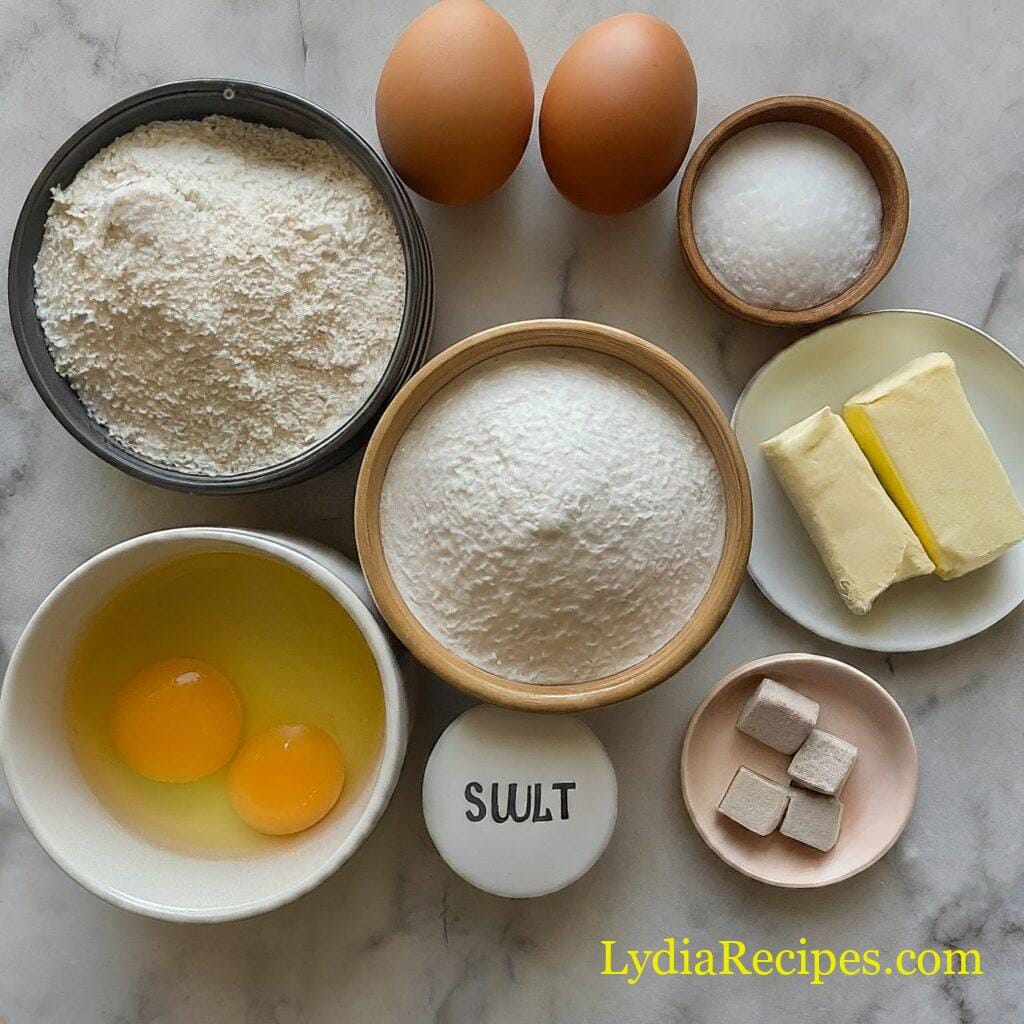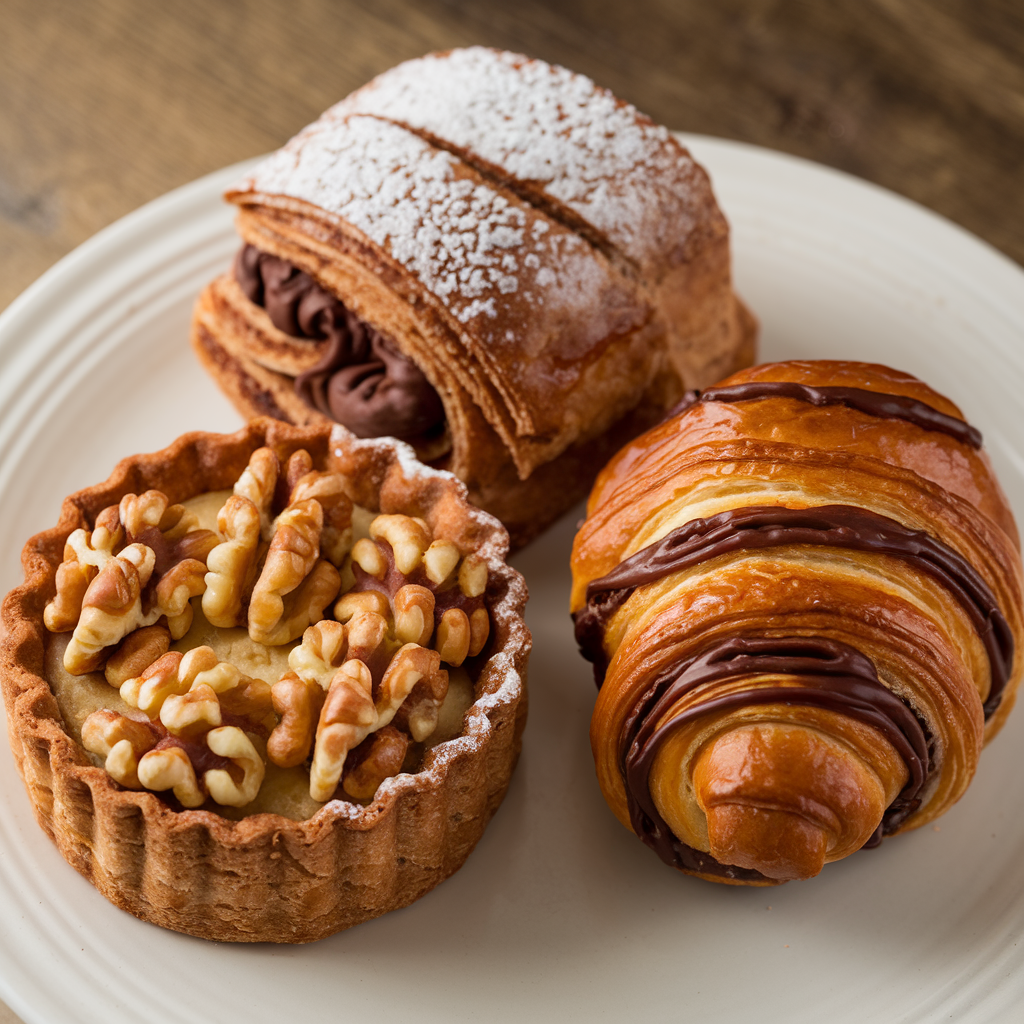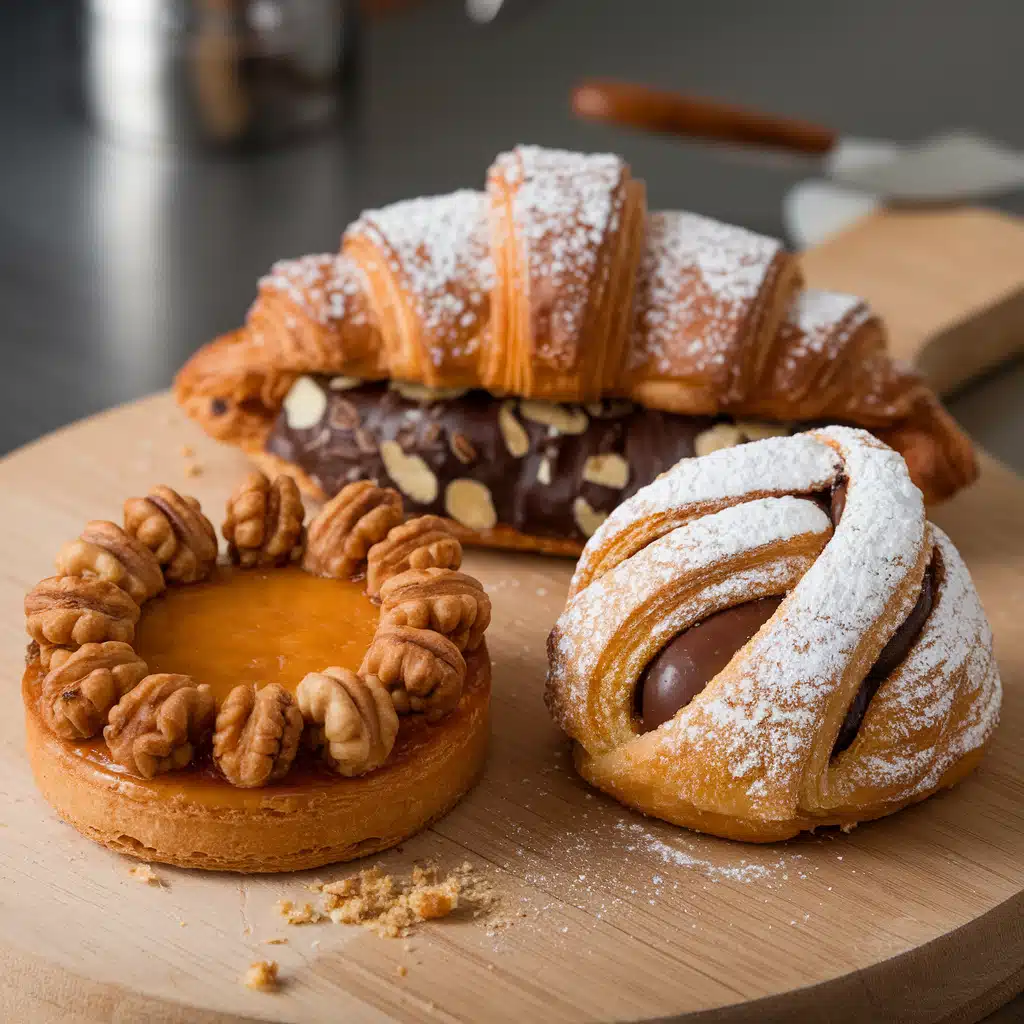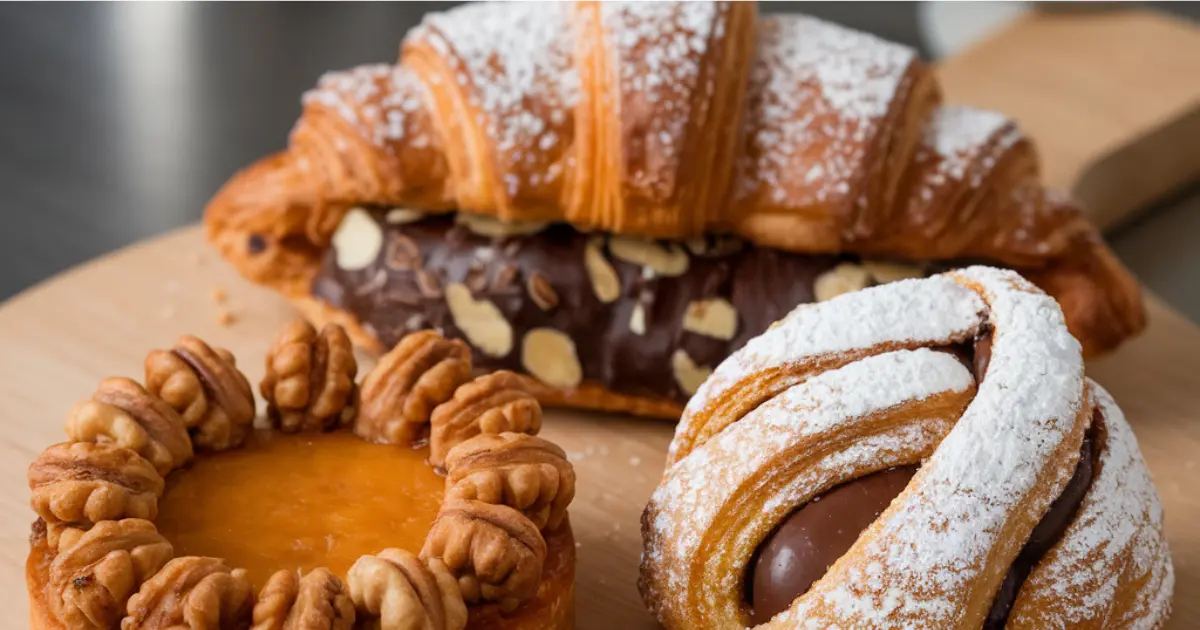Start a tasty adventure in the world of Swiss pastries. These flaky, crescent-shaped treats are a delight. Learn about the history, cultural importance, and special qualities of gipfeli, nussgipfel, and mandelgipfel. These pastries are a big part of Swiss baking, showing off the country’s food heritage.
Gipfeli, nussgipfel, and mandelgipfel are more than just yummy treats. They show the skill and hard work of Swiss bakers. Each one has its own taste and baking method, making a wide range of choices for those who love pastries.
- Explore the rich history and cultural significance of Swiss pastries
- Discover the unique characteristics and flavor profiles of gipfeli, nussgipfel, and mandelgipfel
- Understand the artistry and dedication of Swiss bakers in creating these beloved specialties
- Learn about the regional variations and specialties that contribute to the diversity of Swiss pastry offerings
- Appreciate the croissant-like qualities and similarities to Viennoiserie in these Swiss delicacies

The Swiss Bakery Tradition
Switzerland’s bakeries are famous for their amazing pastries. Each region has its own special treats that are part of the country’s culture. You’ll find everything from flaky Gipfeli to nutty Nussgipfel in Swiss bakeries.
History and Cultural Significance
The Swiss bakery tradition goes back centuries. The first famous pastry shops were in the 17th century. These places were more than just bakeries; they were community centers.
People loved making and eating these pastries together. It brought families and neighborhoods closer through food.
Regional Variations and Specialties
Every Swiss canton has its own special pastries. The Valais region is known for its almond-filled Mandelgipfel. The Bernese Oberland has the famous Saanen Zipfel.
Trying these local treats is a fun adventure. It’s a great way for both locals and visitors to experience Switzerland’s food culture.
| Region | Pastry Specialty | Key Ingredients |
|---|---|---|
| Valais | Mandelgipfel | Almonds, butter, sugar |
| Bernese Oberland | Saanen Zipfel | Butter, eggs, sugar |
| Lausanne | Pain Valaisan | Wheat flour, butter, raisins |
What is Gipfeli ?
Gipfeli is a beloved Swiss pastry that food lovers must try when visiting the Alps. It’s known for its flaky, crescent shape and delicious taste.
Definition and Description
Gipfeli is like the Swiss cousin of the croissant. It has a lighter, more delicate texture than the croissant. Its flaky, crisp exterior gives way to a soft, airy inside.
The crescent-shaped gipfeli is made with layers of dough and lots of butter. This makes its crust flaky and golden. The process is similar to making croissants, creating the pastry’s unique layers.
Unlike the croissant, gipfeli has a more subtle taste. The natural sweetness of the dough shines through. This makes gipfeli a unique and delightful Swiss treat.
| Characteristic | Gipfeli | Croissant |
|---|---|---|
| Texture | Flaky, crispy exterior, soft and airy interior | Rich, buttery, and dense |
| Flavor | Subtle, with a focus on the natural sweetness of the dough | Pronounced butter flavor |
| Shape | Crescent-shaped | Crescent-shaped |
Gipfeli showcases the Swiss baking tradition and is a must-try for pastry lovers. Enjoy it as a breakfast treat or afternoon snack. It’s sure to impress your taste buds.
Flaky, Crescent-Shaped Delights
The gipfeli, nussgipfel, and mandelgipfel are standout Swiss pastries. They are known for their crescent shape and flaky, buttery texture. These gipfeli are loved for their beautiful look and delicious taste.
The secret to their charm is in their layers. Each pastry is rolled and folded with care. This makes a pastry that looks amazing and tastes great.
The crescent shape of the gipfeli is more than just pretty. It shows the skill of the bakers. It also means every bite has a perfect mix of crispy and soft.
| Pastry | Defining Characteristics | Flavor Profile |
|---|---|---|
| Gipfeli | Flaky, crescent-shaped swiss pastry | Buttery, lightly sweetened |
| Nussgipfel | Crescent-shaped, with a nutty filling | Nutty, slightly sweet |
| Mandelgipfel | Crescent-shaped, with an almond filling | Almond-flavored, subtly sweet |

These flaky, crescent-shaped treats are perfect for any time. They are a true delight for the senses. Each bite is a mix of textures and flavors.
Nussgipfel: The Nutty Cousin
The nussgipfel is a close relative of the gipfeli, a Swiss pastry. It has a flaky, buttery dough but adds a rich nutty filling. This makes it a treat for the senses.
Ingredients and Flavor Profile
The nussgipfel uses the same dough as the gipfeli but adds a nutty twist. It includes:
- Finely chopped almonds or hazelnuts
- Brown sugar or honey to sweeten the filling
- Butter or cream to bind the mixture
- A touch of cinnamon or vanilla for warmth and depth of flavor
This pastry is both nutty and sweet. It has a soft texture that pairs well with the crunch of nuts. The flavor profile is a mix of buttery, nutty, and caramel notes. It’s a treat that leaves a lasting impression.
| Ingredient | Quantity |
|---|---|
| All-purpose flour | 2 cups |
| Unsalted butter, chilled and cubed | 1 cup |
| Granulated sugar | 1/4 cup |
| Hazelnuts, finely chopped | 1 cup |
| Heavy cream | 1/4 cup |
| Vanilla extract | 1 teaspoon |
Mandelgipfel: The Almond Lover’s Choice
If you love almonds, you’ll adore the Swiss pastry called mandelgipfel. It’s a treat that pleases the senses. It mixes flaky, buttery pastry with the rich taste of almonds.
The mandelgipfel stands out because of its shape. Unlike crescent-shaped gipfeli, it’s long and straight. It’s also topped with sliced almonds for extra texture and beauty.
The flavor is truly special. The dough is filled with almonds, blending buttery pastry with nutty, aromatic filling. Each bite takes you to a world of Swiss baking.
Enjoy it as a morning treat with coffee or an afternoon delight. The mandelgipfel is a Swiss pastry that will make every almond lover happy.
Croissant-like or Truly Unique?
Swiss pastries like gipfeli, nussgipfel, and mandelgipfel raise a question. Are they just variations of the croissant, or do they have their own special qualities? These qualities make them stand out from the viennoiserie tradition.
Comparing Swiss Pastries to Viennoiserie
Swiss croissant-like pastries come from the same family as famous viennoiserie treats. They all use a flaky, buttery dough. This dough is folded to create the layers we love.
But Swiss pastries have their own special touches. For example, the gipfeli is lighter and less rich than a croissant. The nussgipfel has a nutty filling that’s different from Viennese pastries. And the mandelgipfel has a unique almond flavor.
| Pastry | Key Differences from Viennoiserie |
|---|---|
| Gipfeli | Lighter, more delicate texture compared to croissant |
| Nussgipfel | Incorporates a nutty filling, setting it apart from the classic croissant |
| Mandelgipfel | Showcases the delicate flavor of almonds, creating a unique experience |
Swiss pastries may look like viennoiserie treats, but they taste and feel different. They are not just like croissants. They are special treats that deserve their own celebration.
Gipfeli: A Beloved Breakfast Treat
In Switzerland, the gipfeli is a favorite breakfast treat. These flaky, crescent-shaped pastries are loved by all. They bring joy and comfort to the morning.
The gipfeli is more than a Swiss pastry. It’s a cultural icon that shows the country’s rich baking traditions. Enjoyed with coffee or tea, it’s a timeless delight.
The gipfeli is special because of its buttery texture and sweet flavor. It’s perfect for a relaxing morning. You can enjoy it alone or with toppings like jams or honey.
In Swiss families, the gipfeli is a cherished tradition. It brings people together over a delicious moment. The smell of fresh gipfeli is a great way to start the day.
If you’re in Switzerland, you must try the gipfeli for breakfast. It’s a taste of the country’s culinary heritage. Enjoy the flaky goodness and see why it’s loved by so many.

As we wrap up our journey through Swiss pastries, it’s clear these treats are loved by many. Gipfeli, nussgipfel, and mandelgipfel are more than just food. They are a taste of Swiss culture and tradition.
These pastries, with their flaky layers and delicious flavors, are a delight. They show the skill and passion of Swiss bakers. Each pastry is a unique experience, from the buttery gipfeli to the almond-filled mandelgipfel.
We hope you enjoy trying these pastries and learning about their history. Whether you’re new to Swiss pastries or a seasoned fan, there’s something special about them. Discovering gipfeli, nussgipfel, and mandelgipfel is an experience you’ll remember.
FAQ
What are gipfeli, nussgipfel, and mandelgipfel?
Gipfeli, nussgipfel, and mandelgipfel are Swiss pastries known for their flaky, crescent shapes. Gipfeli is like a croissant. Nussgipfel has a nutty filling, and mandelgipfel is all about almonds.
What is the history and cultural significance of these Swiss pastries?
Swiss bakeries are famous for their pastries, a big part of Swiss food culture. These treats, like gipfeli, nussgipfel, and mandelgipfel, show the diversity of Swiss baking. They have a rich history that varies by region.
What makes gipfeli a special Swiss pastry?
Gipfeli is a Swiss breakfast favorite, known for its flaky shape and taste. It’s similar to a croissant but has its own special qualities. This makes it a beloved part of Swiss baking.
How do the nussgipfel and mandelgipfel differ from the gipfeli?
Nussgipfel and mandelgipfel are similar to gipfeli but have their own twists. Nussgipfel has a nutty filling, often almonds or hazelnuts. Mandelgipfel focuses on almonds, perfect for almond lovers.
Are these Swiss pastries similar to the classic viennoiserie, such as the croissant?
Swiss pastries like gipfeli, nussgipfel, and mandelgipfel share some traits with croissants. But they also have unique qualities. These Swiss treats have their own flavors and cultural importance, making them special.
Why are gipfeli considered a beloved breakfast treat in Switzerland?
Gipfeli is a favorite Swiss breakfast item, loved for its flaky shape and flavors. It’s a comforting start to the day. Its popularity shows its deep connection to Swiss baking and the joy it brings.
